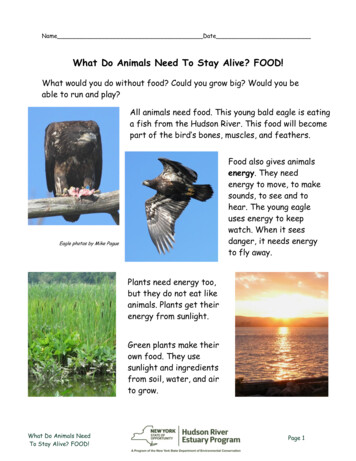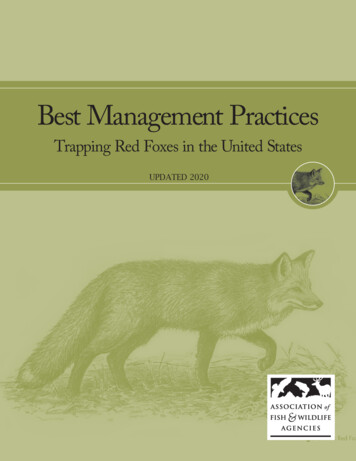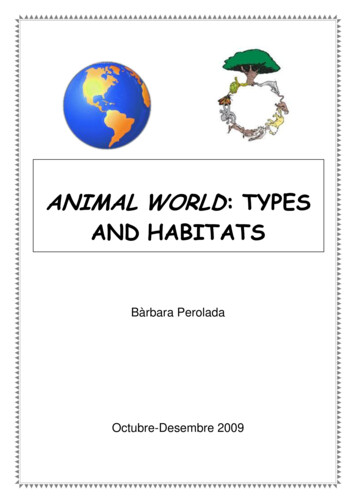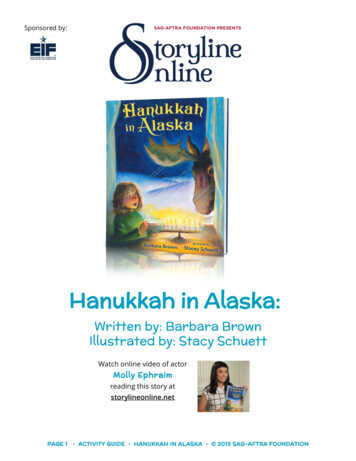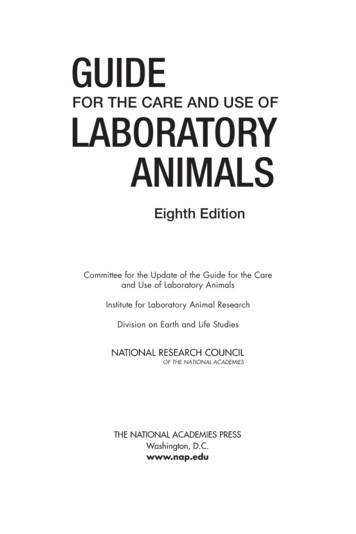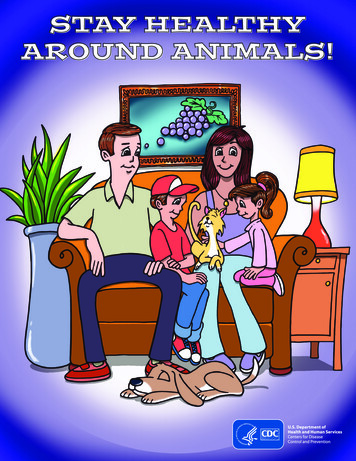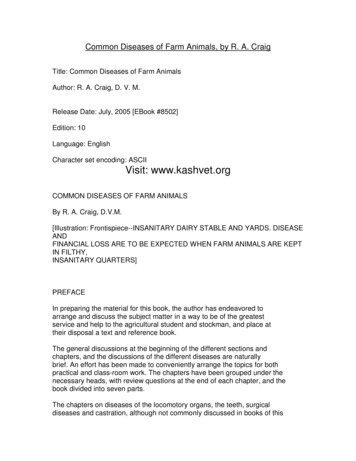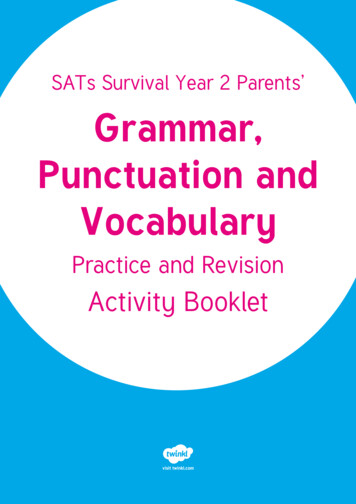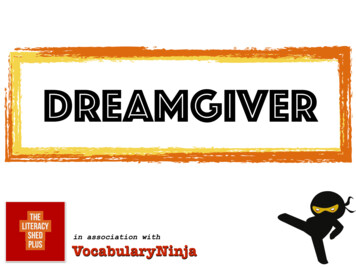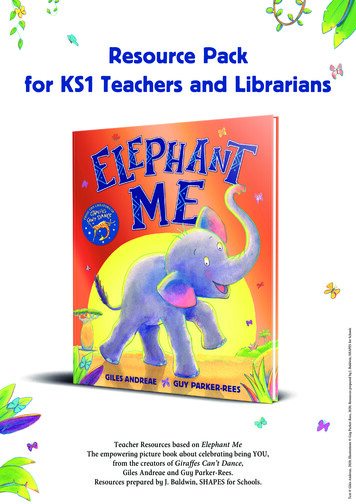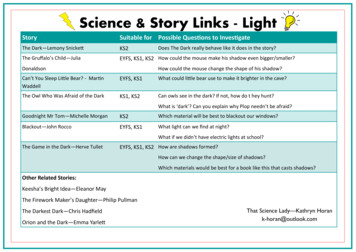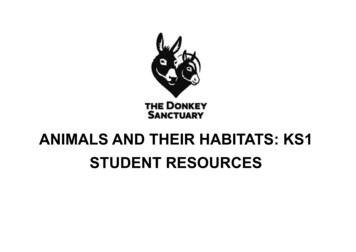
Transcription
ANIMALS AND THEIR HABITATS: KS1STUDENT RESOURCES
PLANT OR ANIMAL ?(Lesson 1:1)Card sort task: print out and get the students to sort theminto: Plants or Animals. Get the students to explain whythey have grouped them like that, how do they know?
ANIMAL GROUPING TASK(Lesson 1:2)Can flyHas legsSpiderDonkeySnakeHas furor hairElephantBirdGroup the animals intothe correct areas inthe Venn diagram.CatFishButterflySheep
ANIMAL GROUPING TASKCan flyHas legsHas furor hairName the animal andthen group them intothe correct areas inthe Venn diagram.(Lesson 1:2 alternative)
ANIMAL GROUPING TASK(Lesson 1:3)Group the animals into the correct areas in the Carroll diagram
ANIMAL GROUPING TASKGroup the animals into the correct areas in the Carroll diagram
ANIMAL GROUPING TASKGroup the animals intothe correct areas inthe Venn diagram.
ANIMAL& PLANTCARDS(Lesson 1:4)
ANIMAL& PLANTCARDS(Lesson 1:4)
ANIMAL& PLANTCARDS(Lesson 1:4)
ANIMAL& PLANTCARDS(Lesson 1:4)
INDEPENDENT LEARNING (Lesson 1:5)Name the different parts of the animals and plantsName: Class:
POND DIPPING IDENTIFICATION (Lesson 2:1)Which of these have you seen or caught?Water BoatmanDamselflyFrog spawnWater miteCaddis larva in it’scaseDiving beetle larvaTadpolePond skaterCaddis fly larvaDragonflyFrogletSticklepathDiving beetleFreshwatershrimpNewtRat tailed maggotFrogDragonfly nymphDaphniaWater Louse
POND DIPPING IDENTIFICATION(Lesson 2:2)Identify and record your findings.Date of investigation: Name of pond:WherefoundIdentifiedanimal asDrawingNumber ofanimalsWherefoundIdentifiedanimal asNumber ofanimalsDrawingOn topOn topTopTopMiddleMiddleBottomBottomOn topOn topTopTopMiddleMiddleBottomBottomOn topOn topTopTopMiddleMiddleBottomBottomName: Class:
TREE / LEAF IDENTIFICATION(Lesson 2:3)
drydampHABITATDESCRIPTIONS(Lesson 3:1)hot cold icydark wetsmooth bare
hard softsunny frozenbumpy plaincolourfulHABITATDESCRIPTIONS(Lesson 3:1)
BIG HABITATS:MOUNTAIN (Lesson 3:2)
BIG HABITATS:SEA (Lesson 3:2)
BIG HABITATS:FOREST (Lesson 3:2)
BIG HABITATS:DESERT (Lesson 3:2)
BIG HABITATS:POLAR (Lesson 3:2)
BIG HABITATS:RIVER (Lesson 3:2)
BIG HABITATS:BEACH (Lesson 3:2)
BIG HABITATS:JUNGLE (Lesson 3:2)
BIG HABITATS: SAVANNAH (Lesson 3:2)
BIG HABITATS (Lesson 3:3)Describe the nRiverJungleSeaDesertBeachForestPolarSavannahName: Class:
INDEPENDENT LEARNING (Lesson 3:4)List as many adjectives as you can that would describe three of the big habitats.MountainWho in the team has done what tasks in this project?Name: Class:
HABITAT IN A BOX (Lesson 4:1)
HABITAT RESEARCH (Lesson 4:2)Find out the animals, plants and colours for your habitat and sort them into types.ResearchAnimalsHerbivorePlantsCarnivoreOther thingsOmnivoreFloweringColoursNon floweringIndependentlearningName: Class:
DESIGN YOUR HABITAT (Lesson 4:3)My habitat is:Create 6 different ideas for your habitat in a box.Name: Class:
INDEPENDENT LEARNING (Lesson 7:1)Design the front edges of your habitat (Develop 3 ideas)Who in the team has done what tasks in this project?Name: Class:
STORY SEQUENCING(Lesson 8:1)
STORYBOARD (Lesson 8:2 alternative)Name:Title of story:Date: Class:Main characters:
STORYBOARD (Lesson 8:2 alternative)Name:Title of story:Date: Class:Main Characters:
(Lesson 8:2 alternative)What things happen?Build up the interest.What is said?Introduce the maincharacters and wherethe story is set.The BeginningThe Build-UpThe ProblemIs there a mystery orproblem?Do bad things happen?The ResolutionHappy or sad ending?What do people learn?How are things sortedout or solved?What makes it good?Has anything changed?The EndingNameDate
(Lesson easonbrownblacksmelly
INDEPENDENT LEARNING: STORY SEQUENCING (Lesson 8:3)Create a set of story sequencing cards for your story.Name: Class:
ANIMAL ADAPTATIONS (Lesson 9:1)Create an animal suitable for the habitat. Label and explain why it is suitable.Name: Class:
ANIMAL ADAPTATIONS (Lesson 9:2)Create your own adapted animals.A parrot so itcan hide in apalm treeA lamb so it caneat the fruit of theAfrican “sausage”tree, the KigeliaafricanaName: Class:
ANIMAL ADAPTATIONS:Tracing templates foranimal adaptationdrawings.(Lesson 9:2)
FOOD CHAIN CARDS (Lesson 10:1)
FOOD CHAIN CARDS (Lesson 10:1)
FOOD CHAIN CARDS (Lesson 10:1)
FOOD WEBS (Lesson 10:2)THE DONKEY SANCTUARY
FOOD CHAIN WORDSEARCH (Lesson MERPREDATORPREYPRODUCERENERGYHERBIVORE
INDEPENDENT LEARNING: FOOD CHAINS (Lesson 10:4)Explain the food chain terms below.HerbivoreProducerCreate a food web for the following abbitButterflyName: Class:
LOOKING AFTER PETS (Lesson 11:1)Explain what you need to do and the things you need to do them with for eachof the pets and a pet of your own.Things I doThings I needDogDonkeyGuinea PigName: Class:
LOOKING AFTER PETS: THE FIVE FREEDOMS (Lesson 11:2)Explain how the five freedoms would apply to each of the pets and a pet of yourown choice.Freedom from:12345Hunger and thirstDiscomfortPain, injury andBehavingFear and stressDogDonkeyGuinea PigName: Class:
LOOKING AFTER PETS: HEALTHY PETS (Lesson 11:3)Match up the items up for each animal’s care and well being.(Label whether they are for food, bedding, grooming, health care, water or fun)Name: Class:
Group the animals into the correct areas in the Carroll diagram. ANIMAL GROUPING TASK Group the animals into the correct areas in the Venn diagram. ANIMAL & PLANT CARDS (Lesson 1:4) . wild tree bumpy wave surf grass vine flower seaweed snow climb shiny calm rock giant huge high bird rain m
